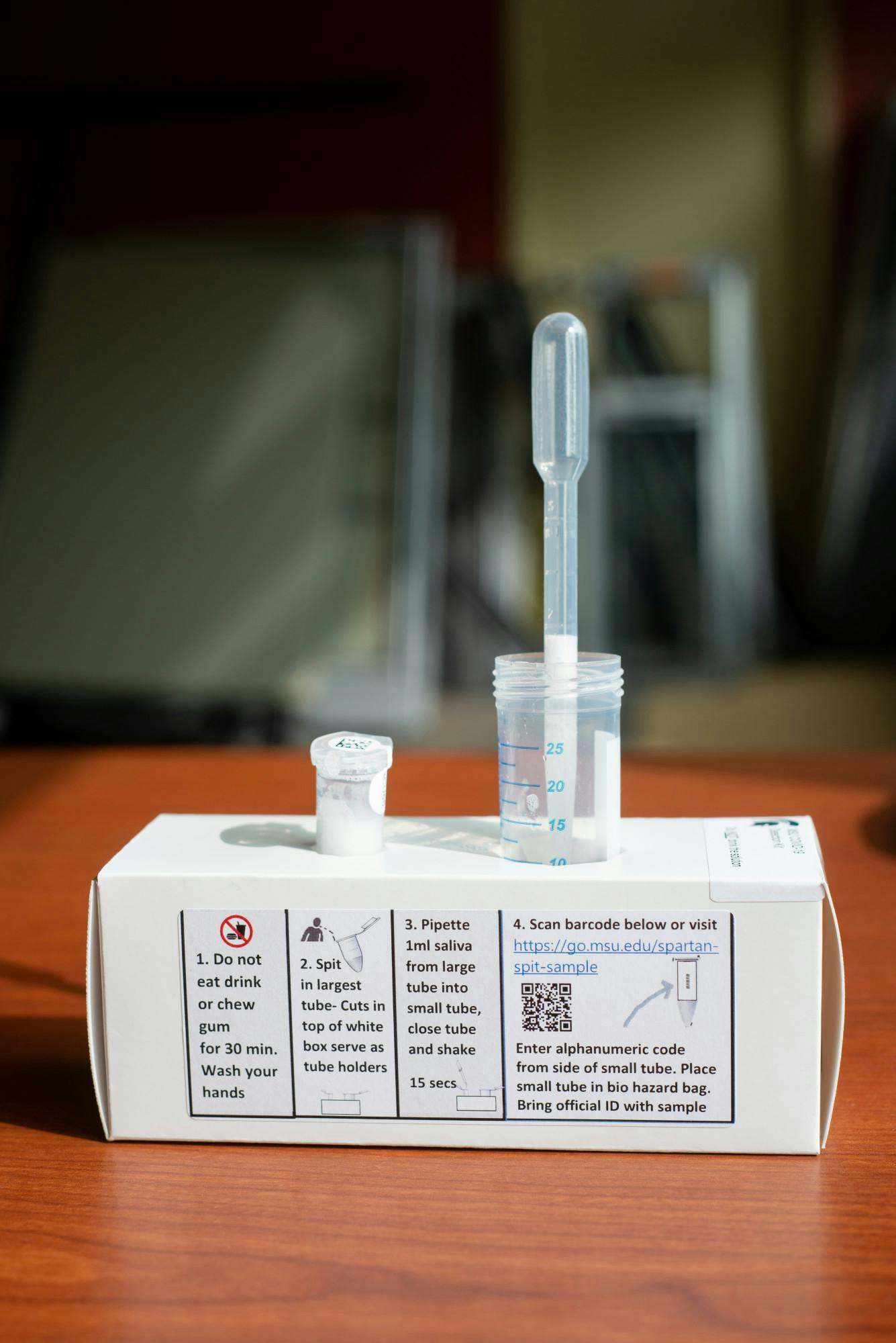The race toward a safe, successful and sufficient COVID-19 vaccine has hastened for the past two weeks, and the dash to the finish line doesn't seem to be slowing down anytime soon.
On Nov. 9, Pfizer released a statement saying its vaccine showed to be more than 90% effective in its first interim analysis of a Phase 3 study. A week later, Moderna said its vaccine was 94.5% effective, analyzing 95 positive COVID-19 cases from a 30,000 case study. From those 95 cases, 90 people received the placebo, or dummy shot, and five people received the vaccine.
Two days after Moderna’s announcement, Pfizer released another statement. This time, the company concluded its Phase 3 study on Nov. 18, saying its vaccine was 95% effective. It took 170 positive COVID-19 cases from its 43,000 case study and found that 162 people received the placebo, while 8 received the vaccine. On Nov. 20, Pfizer submitted an Emergency Use Authorization request to the Food and Drug Administration for its vaccine.
Dr. Andrew Olive, a professor in MSU’s Department of Microbiology and Molecular Genetics, described himself as a realist when it comes to COVID-19, noting how discouraging the past eight months have been. He said this recent news might flip the switch toward brighter days.
“This is sort of the first maybe two weeks that I’ve had in COVID science where you’re thinking, ‘OK, there might actually be a light at the end of this tunnel,’” Olive said. “Not only is there one (vaccine), but there’s two. They both have similar safety profiles if you look at their Phase 2 studies that are published already. The Phase 3 trials we’re waiting on, but I certainly think these are very good companies that are very good at what they do.”
While this news is definitely promising, it is not absolute to whether we will receive a vaccine in the next couple of weeks. Only time will tell.
What’s different about these vaccines?
Pfizer and Moderna are pioneering a new approach to their COVID-19 vaccines, and their answer might bring you back to high school biology class. Remember Messenger RNA, or mRNA?
“Both the Pfizer and the Moderna (vaccines) are both mRNA nanoparticle vaccines,” Olive said. “So what that means is normally you get your vaccine and it’s essentially a bunch of proteins mixed together with a thing called an adjuvant that helps to activate some inflammation and help you make antibodies and immune responses against that. Here, what we’re doing is they’re actually providing the Messenger RNA into yourself and having yourself make those proteins that you normally would introduce in the vaccine itself.”
No prior vaccine in history has been developed this way.
“I think the interesting thing about these vaccines is these haven’t been approved in humans to date,” Olive said.
What’s made these trials so fast?
Olive said the mRNA vaccines have an important edge over protein vaccines: speed. Not having to generate proteins allows Pfizer and Moderna the ability to produce millions of vaccines in a very short time.
“I think the whole process is quick because it shows the power of science, in my view, when everybody can rally around something,” he said. “You had skilled scientists from the outset of COVID who were sequencing these molecules and making really smart decisions on the viral sequences on what should be the right vaccine targets … and, you know, I think the speed is partially because they can manufacture them quickly.”
Another reason why Pfizer and Moderna have been able to rapidly push through their trials is because of how present COVID-19 is. Olive said that scientists cannot prove efficacy just because 30,000 and 40,000 people are in these studies; they have to have enough people in these studies contract COVID-19 before they can make any conclusion in effectiveness.
How do these vaccine trials compare to other historical trials?
In 1953, talks about a polio vaccine spread through the air. Dr. Jonas Salk announced that his vaccine against the infectious disease discovered at the end of the 19th and beginning of the 20th century was progressing better than he thought, but it wasn’t yet ready for trial.
A year later, a trial began with the immunization of 1.3 million children.
Dr. Nigel Paneth, a professor in MSU’s Department of Epidemiology and Biostatistics, said that process was remarkable in itself because of the speed and volume it worked at.
“The polio vaccine trial involved a million school children and was completed in three months,” Paneth said. “I don’t know why we’re beating our breasts about how wonderful we are. This is not — granted, the time from disease, discovery to development of the (COVID-19) vaccine was much shorter — but the actual field work was faster in the polio trials.”
Support student media!
Please consider donating to The State News and help fund the future of journalism.
During its trial, the polio vaccine was 80-90% effective.
This summer, the FDA placed a 50% efficacy floor in its allowance on letting a COVID-19 vaccine get authorized. The jump from 50% to 95% is big.
“With a higher effective vaccine, the population at large could withstand a higher number of people that are unwilling to get the vaccine,” Olive said. “Now, that’s not me saying people shouldn’t get the vaccine. I would, if the vaccine proves to be safe and effective, I would absolutely say everybody should get the vaccine. But being our country and people can make their own decisions, the general public has a little bit more room for error with a higher effective vaccine.”
What happens next?
The FDA must now grant Emergency Use Authorization to the vaccines. Pfizer submitted its application Nov. 20, while Moderna could submit its application soon.
According to the FDA website, “The FDA Commissioner may allow unapproved medical products or unapproved uses of approved medical products to be used in an emergency to diagnose, treat, or prevent serious or life-threatening diseases or conditions caused by CBRN threat agents when there are no adequate, approved, and available alternatives.”
Paneth said the EUA for the vaccines won’t be like the EUA given out in August for the convalescent plasma. The EUA for the plasma was used as a treatment for those who were in the midst of battling COVID-19, and it wasn’t guaranteed that it would be fully effective.
The EUA for the vaccines would be for everyone, not just those who contracted the virus. It would also need a greater assurance of its efficacy. It cannot just be “possibly effective.”
“You’re going to have to have a harsh, a much harder standard than ‘just might be effective',” Paneth said. “You’re going to have to be pretty well convinced it is effective. It’s going to be basically the same standard as licensing, even though it’s going to be called Emergency Use Authorization.”
For Paneth and Olive, they’d also like to see Phase 3 data submitted for peer review from both of the companies.
“I’d like to see the paper,” Paneth said. “I’d like to see a published paper.”
Discussion
Share and discuss “MSU doctors explain Pfizer and Moderna COVID-19 vaccines” on social media.







